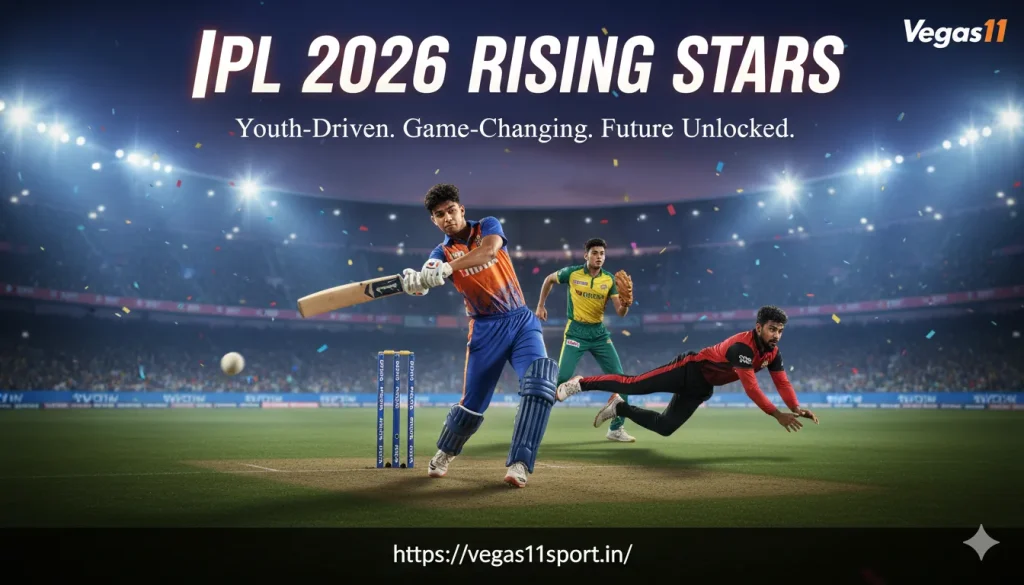
September isn’t just “off-season.” For scouts and analysts, it’s signal season—trial matches, fitness camps, and domestic fixtures reveal who’s ready to jump into the IPL spotlight. After a decade covering IPL pipelines, my take is simple: 2026 will be a youth-driven season. Teams want speed, fielding quality, and fearless batting under lights—exactly what next-gen players bring.
Why Teams Are Betting on Youth Now
Young players give franchises three big wins:
- Tactical flexibility (can field in hot zones, bowl match-ups, pinch-hit),
- Cap efficiency (room for stars later), and
- Brand growth (fresh fan segments + social engagement).
In short, youngsters help teams win games and win attention—a powerful combo heading into the mini auction.
September Scouting Clues You Shouldn’t Miss
- Role clarity: Teams now shortlist players by micro-roles (power-play spinner, late-over enforcer, anchor who rotates).
- Repeatable skills: Consistency under pressure beats one big highlight reel.
- High-leverage fitness: Sprint splits, boundary saves, and recovery between spells matter more than ever.
Talent Profiles the League Is Buzzing About
Vaibhav Suryavanshi (bat) — Rare calm for a teenager; compact base, quick pick-up over mid-wicket. Needs game time, but the ceiling is wild.
Rinku Singh (bat/finisher) — Not just a cult hero; his strike rotation improved. Expect teams to trust him earlier, not just in the 18th over.
U-23 seam/pace group — Young quicks who can nail length at the death are gold; the ones mixing hard length with late dip will headline the season.
Where Fans Track Breakouts Before They Break Out
If you like staying one step ahead of auctions and line-ups, bookmark Vegas11. The platform curates pre-season scouting notes, depth-chart changes, and live odds movements fans actually use. When trial squads shuffle, Vegas11 updates fast; when a youngster’s role changes, you’ll see it reflected in projections. And when the lights come on in April, Vegas11 brings back real-time tools for every innings.
Expert Take: Youth Isn’t Just a Trend—it’s the Game Plan
With purse discipline and data-led selection, 2026 teams will trust skills over fame. If a youngster can repeat his skill under pressure, he plays. If he can also field like a demon, he starts. That’s the new bar.
FAQ — IPL 2026 Young Guns (Reader-Friendly)
Q1. Why are IPL teams so aggressive on youth this year?
Because youth gives role flexibility + cap value. Coaches can plug youngsters into matchup roles without overspending, then use savings for a star at auction.
Q2. What September signals should I watch to spot a breakout?
Role changes (e.g., promoted to finish), improved fielding metrics, and repeatable execution in pressure overs—those are your green flags.
Q3. Are teenage batters really ready for IPL intensity?
If their base is stable (head still, quick pick-up, clean release) and they’ve faced quality pace, yes. Teams will shelter them with clear plans early on.
Q4. Which skills get young bowlers selected fastest?
Two things: a bankable power-play ball (tight channel to right/left) and a trustworthy death option (yorker or slow-ball variant with length disguise).
Q5. How do mini-auction dynamics affect youngsters?
They benefit when franchises lock most budget in 2–3 stars; cap-smart teams then fill critical roles with affordable, high-upside youth.
Q6. What’s the risk with picking too many rookies?
Game-state naivety. The fix: pair rookies with senior anchors so they learn tempo without carrying the entire chase/defense alone.
Q7. How can fans track real roles vs. hype?
Follow depth charts and batting orders during warm-ups/trials, not just highlight clips. Platforms like Vegas11 aggregate these signals so you can separate noise from news.
Q8. Does fielding really move the needle for selection?
Absolutely. One boundary save every game can swing 2–6 runs—that’s the difference between mid-table and playoffs across a season.
Q9. Who benefits more from youth—big brands or smaller franchises?
Both, but for different reasons: big brands scale the story (reach + merch), smaller teams unlock cap efficiency and find edges in matchups.